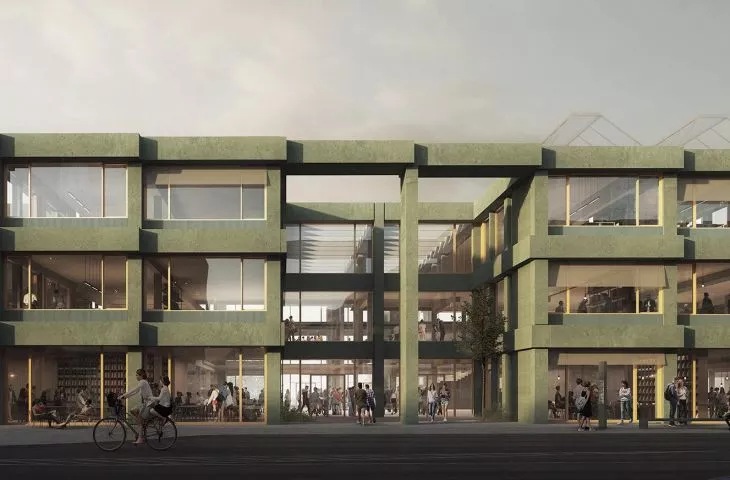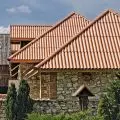Do you remember the tale of the "Three Little Pigs"? Where the wolf blew and huffed until he blew away the house of straw, then the house of wood, only with the brick house he failed? The pigs drew an appropriate moral from these events. Wojciech Kotecki of BBGK Architects, with a slight wink, finds the origins of Poles' "love" for building with concrete in this very story.
They won first place in the competition with their project {tag:Studio} : "Construction of a scientific and educational building at 2/4 Bednarska Street ", which we wrote about here. The verdict could have been different if not for the Future knocking on the door. While the jury was deliberating, an epidemic of coronavirus broke out in Poland, changing the way of thinking and the arrangement of priorities, including in architecture. The building designed by the BBGK Architects team is fully adaptable, ready for change.
The architects have created a kind of manifesto.
We believe that this is not the time to build icons. We need buildings that will serve both us and many generations to come. To best respond to future challenges, the project was based on 3 main ambitions: a structure that is open to the future (providing functional flexibility and meeting needs we can't anticipate now), minimizing the carbon footprint (designing a structure based on low-carbon materials), and improving the quality of human life (creating a building with care for the people who will use it).
None of this sounds futuristic - it should be our present, not just our future.
Bednarska UW
© Igor Brożyna
Urban planning assumptions
The scienceand education building at 2/4 Bednarska Street was designed with special attention to common and public spaces and their clear arrangement. The basic urban design assumption of the building is a clear continuation of Mariensztat Street towards the Vistula River. Its dissection in this location responds to historical conditions, but also creates the potential of bringing the city closer to the river. In this way, the main axis was determined, which included the entrance plaza and the central space of the building - the agora. The second axis was determined by the portico of the Bathhouse. The building itself is interspersed with a series of courtyards of different characters, and the structure thus created is surrounded by an urban framework, completing the lost city quarter.
Functionality
By basing the building on an open structure, full freedom of space arrangement has been ensured. In line with the main idea - the project assumes the possibility of changing the object over time. Its opening, closing or expanding. The most important meeting place here is the agora - the center where all internal roads and entrance plazas intersect. From here one will be able to head to any of the wide staircases running from the first floor all the way to the building's roof. The agora space opens to all floors and visually connects the functional blocks planned around it.
Responsible construction
Wojciech Kotecki of BBGK Architects considers the design of the teaching and research building at 2/4 Bednarska Street to be a manifesto of wooden construction. The designers wanted to encapsulate their concern for the future in this concept, through responsible resource management, attention to user comfort and sustainable design. Accordingly, wood and reinforcedconcrete construction was introduced. Wood was used in the most logical structural elements - beams and hybrid wood-concrete floors. At the same time, the building was designed in such a way that all structural solutions could be made alternatively in traditional reinforced concrete construction technology.
Sustainable energy solutions
© BBGK Architects
Thanks to the terraces, the strip structure of the building and the upward-opening atrium with a skylight in the roof, the building receives adequate sunlight, and natural light reaches everywhere it is desired. At the same time, efforts were made to minimize the possibility of overheating in individual rooms.
Buildings designed yesterday and today may prove useless in the near future. Their function should be to outlive us all, to serve the next generation - if not as a university, then as a hospital or residential or office facility. Our ideas about education today may be obsolete in the future. Openness to it is key in building design. The building at 2/4 Bednarska Street is resilient to the coming changes, thanks to the sustainable design and individualization of the solutions used.





































